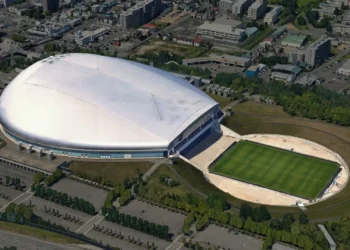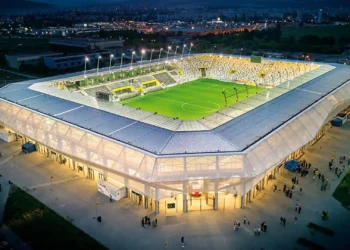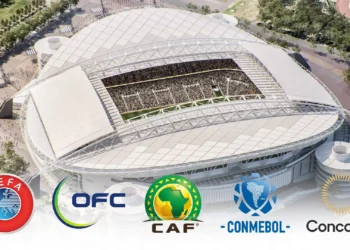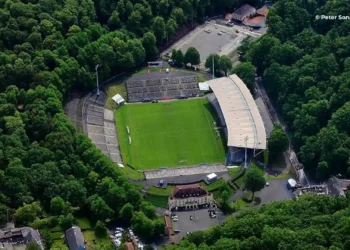Some football stadiums don’t just sit inside a city — they become part of its architecture.
Packed tightly between apartments, narrow streets, cafés, and daily life, these arenas feel like they grew together with the neighborhoods around them. Their walls touch residential buildings, their stands rise above rooftops, and their matchday atmosphere spills directly into the streets.
In these unique locations, football is not just a sport — it is the heartbeat of the district.
Here are ten of the most fascinating stadiums in the world that are truly hidden inside the urban landscape.
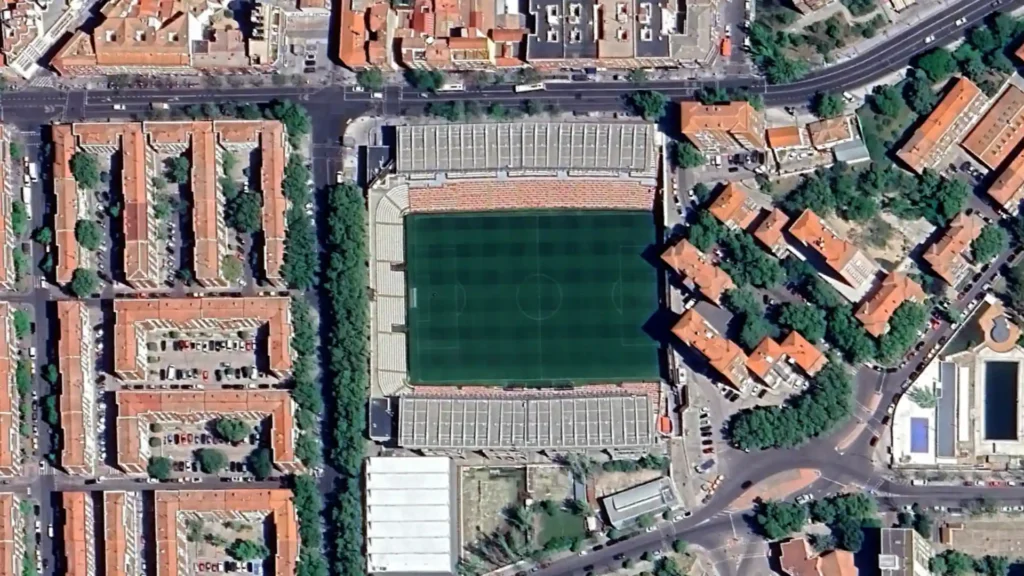
1. Campo de Fútbol de Vallecas – Madrid, Spain
- Home team: Rayo Vallecano
- Opened: 1976
- Capacity: ~14,500
- Urban highlight:
Vallecas is the ultimate neighborhood stadium. Entire stands sit just meters from residential buildings. Fans can literally step out of their homes and walk directly into the stadium — it’s football woven deeply into everyday life.

2. Ramón Sánchez Pizjuán – Seville, Spain
- Home team: Sevilla FC
- Opened: 1958
- Capacity: 43,883
- Urban highlight:
Surrounded by city blocks on all sides, this iconic red-and-white fortress rises sharply above Seville’s dense streets. Its location gives matchdays a festival-like atmosphere as fans flood the surrounding bars and alleys.
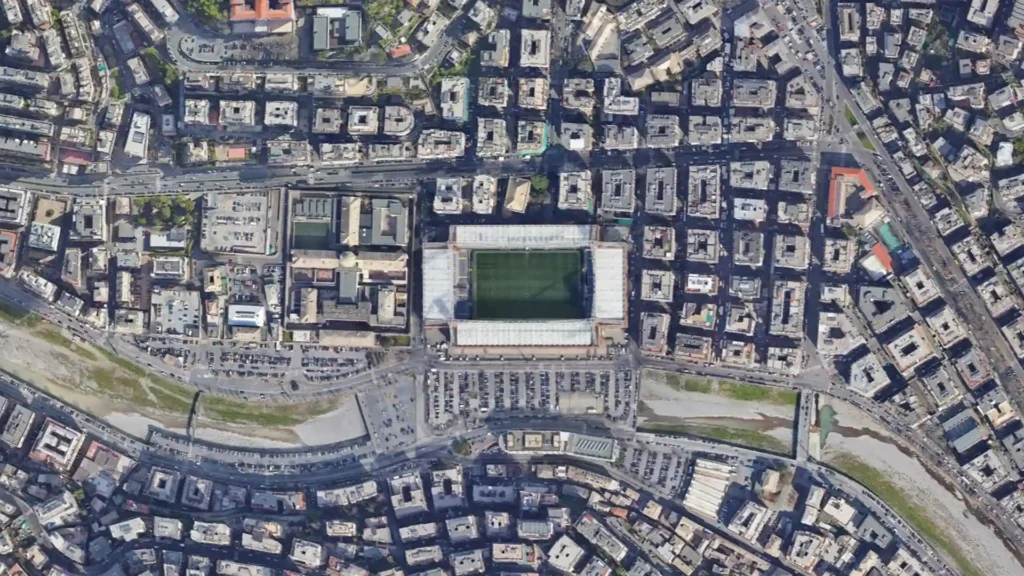
3. Luigi Ferraris – Genoa, Italy
- Home teams: Genoa CFC & Sampdoria
- Opened: 1911
- Capacity: 36,600
- Urban highlight:
Built deeply inside Genoa’s compressed urban layout, this stadium appears squeezed between buildings and hills. Its brick towers and English-style shape make it one of Europe’s most beloved inner-city arenas.
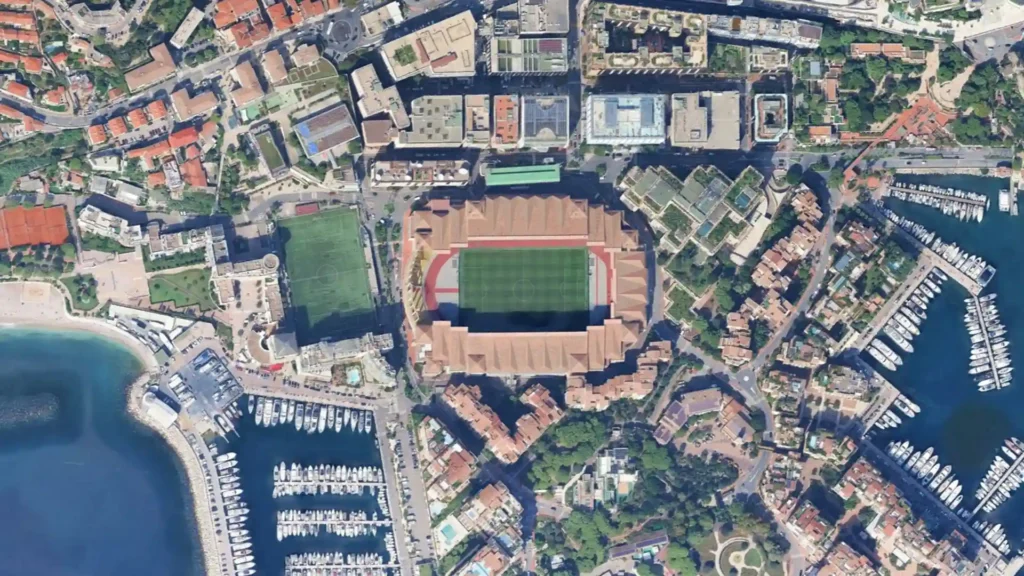
4. Stade Louis II – Monaco
- Home team: AS Monaco
- Opened: 1985
- Capacity: 16,300
- Urban highlight:
With extremely limited land in Monaco, the stadium is integrated directly into a larger city complex and encircled by tall buildings. From many angles, it looks like a stadium hidden inside a luxury district.

5. Goodison Park – Liverpool, England
- Home team: Everton
- Opened: 1892
- Capacity: ~39,000
- Urban highlight:
Famous worldwide for being tightly wedged into Liverpool’s terraced housing. Goodison’s stands practically touch the surrounding houses, making it a classic example of old-school, community-embedded British football architecture.
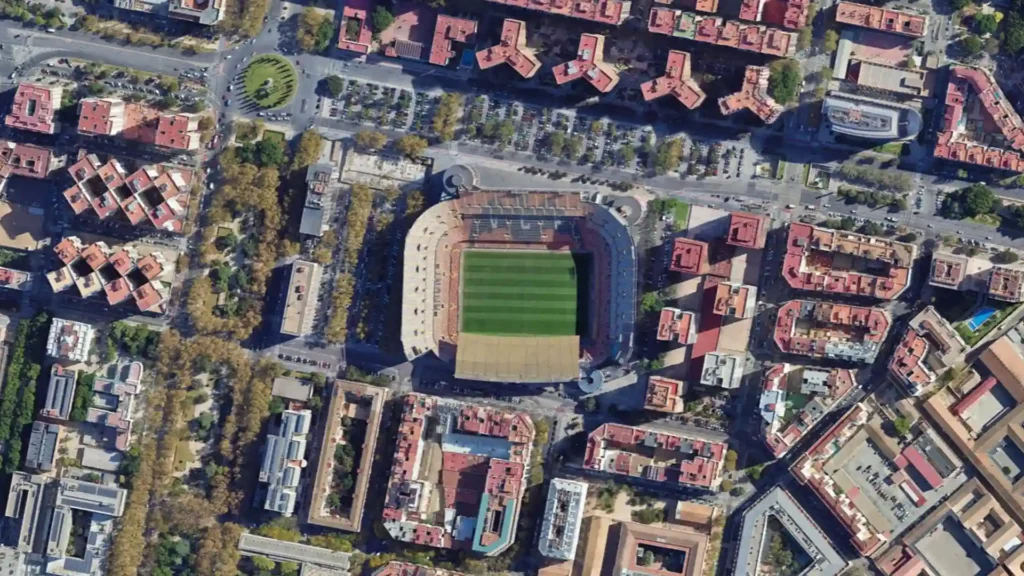
6. Mestalla – Valencia, Spain
- Home team: Valencia CF
- Opened: 1923
- Capacity: 49,430
- Urban highlight:
One of Europe’s steepest and loudest stadiums, Mestalla rises dramatically above the apartment blocks that encircle it. Its intimidating vertical stands add to the sense that the stadium is carved directly into the neighborhood.
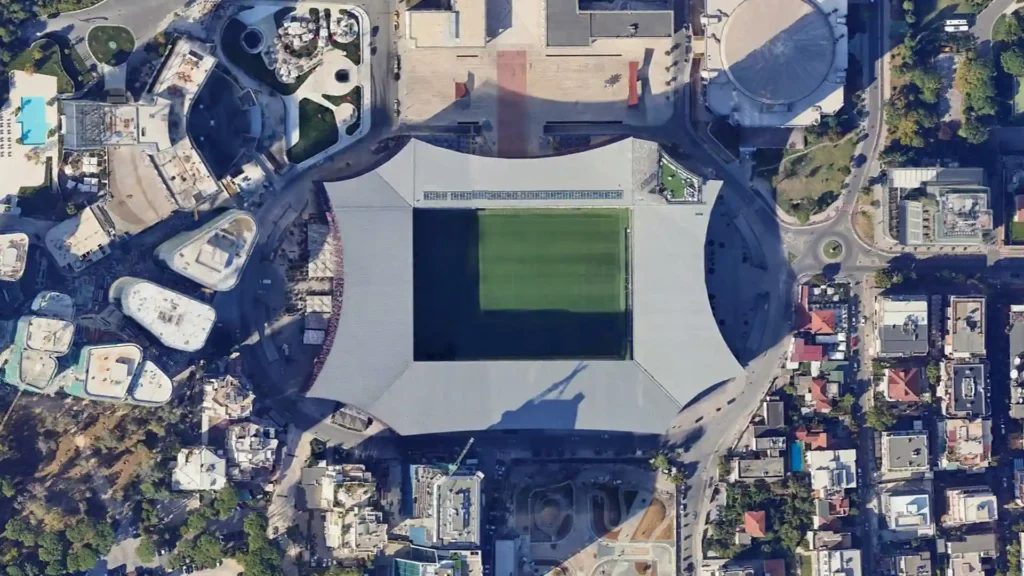
7. Air Albania Stadium – Tirana, Albania
- Home team: Albania National Team
- Opened: 2019
- Capacity: 22,500
- Urban highlight:
Built in the heart of the capital, the stadium is surrounded by high-density residential and commercial buildings. Its red-and-black tower and modern design contrast sharply with the urban texture around it, making it a striking city landmark.

8. La Bombonera – Buenos Aires, Argentina
- Home team: Boca Juniors
- Opened: 1940
- Capacity: 54,000
- Urban highlight:
Perhaps the most famous urban stadium in the world. Bombonera is tightly enclosed by apartment buildings, and some balconies even overlook the pitch. It is football intensity in its purest urban form.
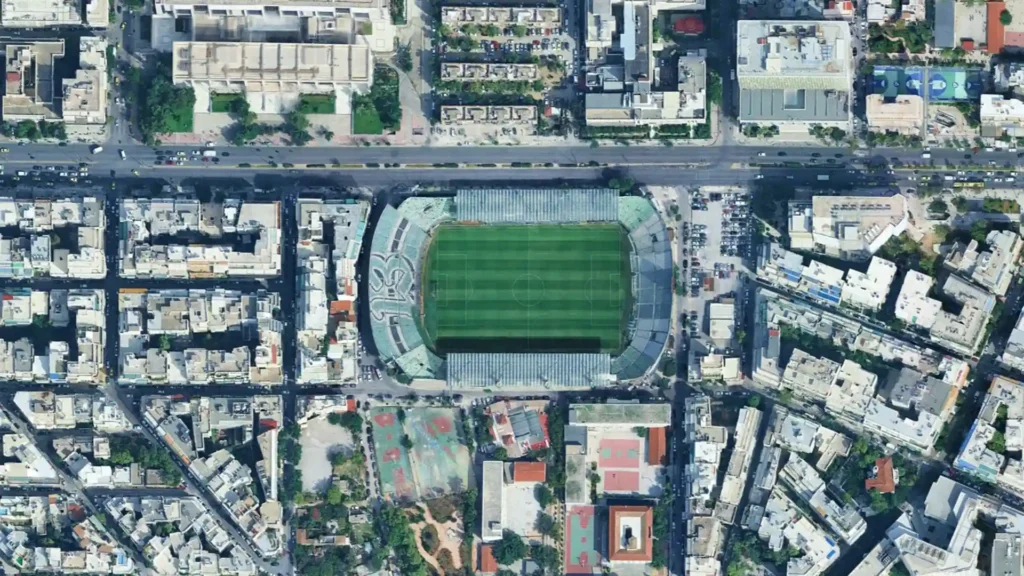
9. Panathinaikos Stadium (Apostolos Nikolaidis Stadium) – Athens, Greece
- Home team: Panathinaikos
- Opened: 1922
- Capacity: 16,000
- Urban highlight:
Situated in a packed Athenian neighborhood, this historic venue stands only a few steps from surrounding homes and shops. Its tight layout creates one of the most intimidating atmospheres in Greece.
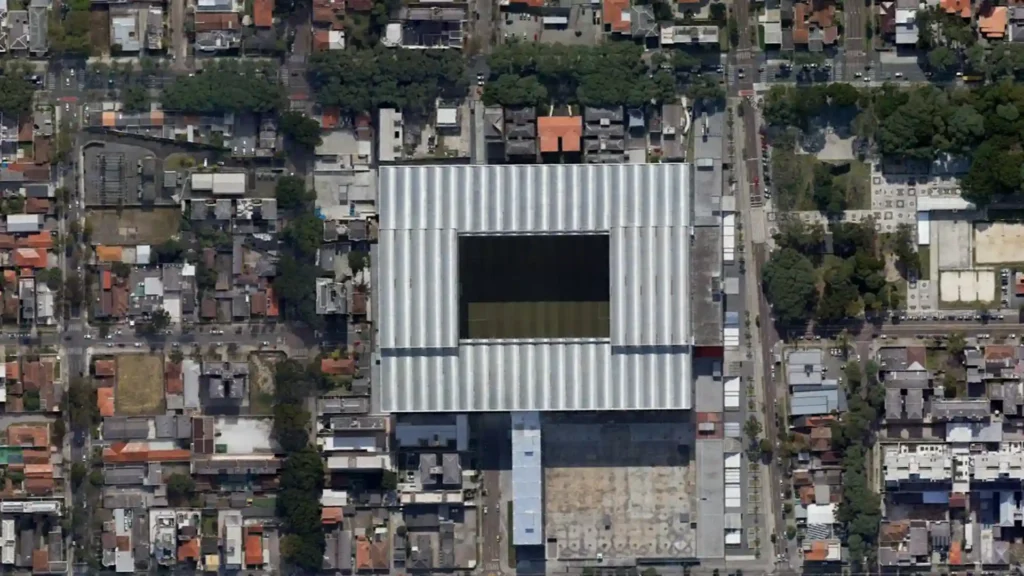
10. Arena da Baixada – Curitiba, Brazil
- Home team: Athletico Paranaense
- Opened: 1914 (latest renovation 2014)
- Capacity: 42,372
- Urban highlight:
A modern gem completely integrated into the city block. The stadium is surrounded by tall buildings, busy streets, and commercial areas, blending seamlessly into Curitiba’s dense landscape.
Conclusion
Stadiums hidden within cities create an atmosphere unlike any other — raw, intimate, and deeply connected to community life. Their presence shapes the neighborhoods around them, turning matchdays into urban celebrations where football and city living merge perfectly.
Whether old and historic like Goodison Park or modern like Air Albania Stadium, these arenas prove one thing:
Football doesn’t just belong in cities — it thrives in their heart.


